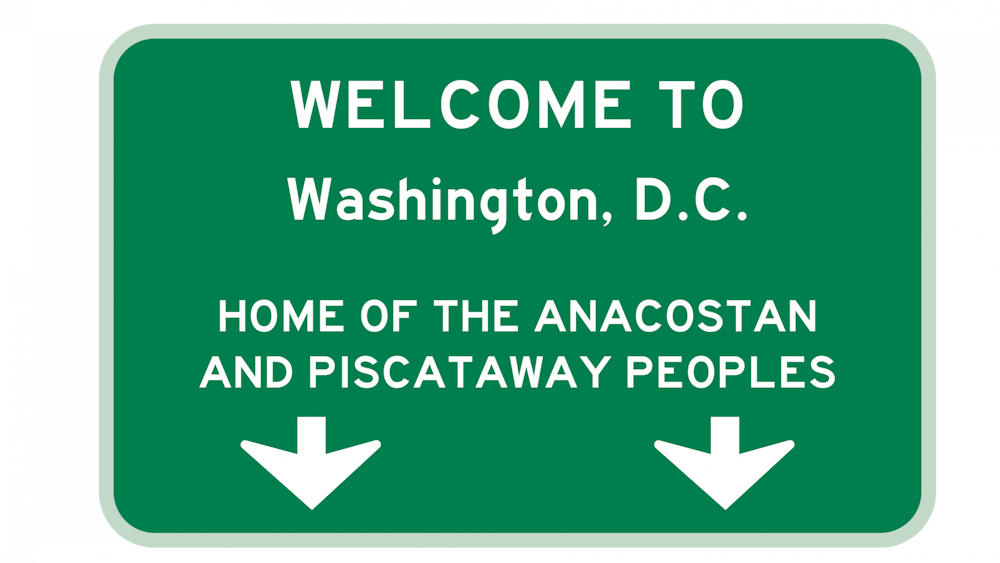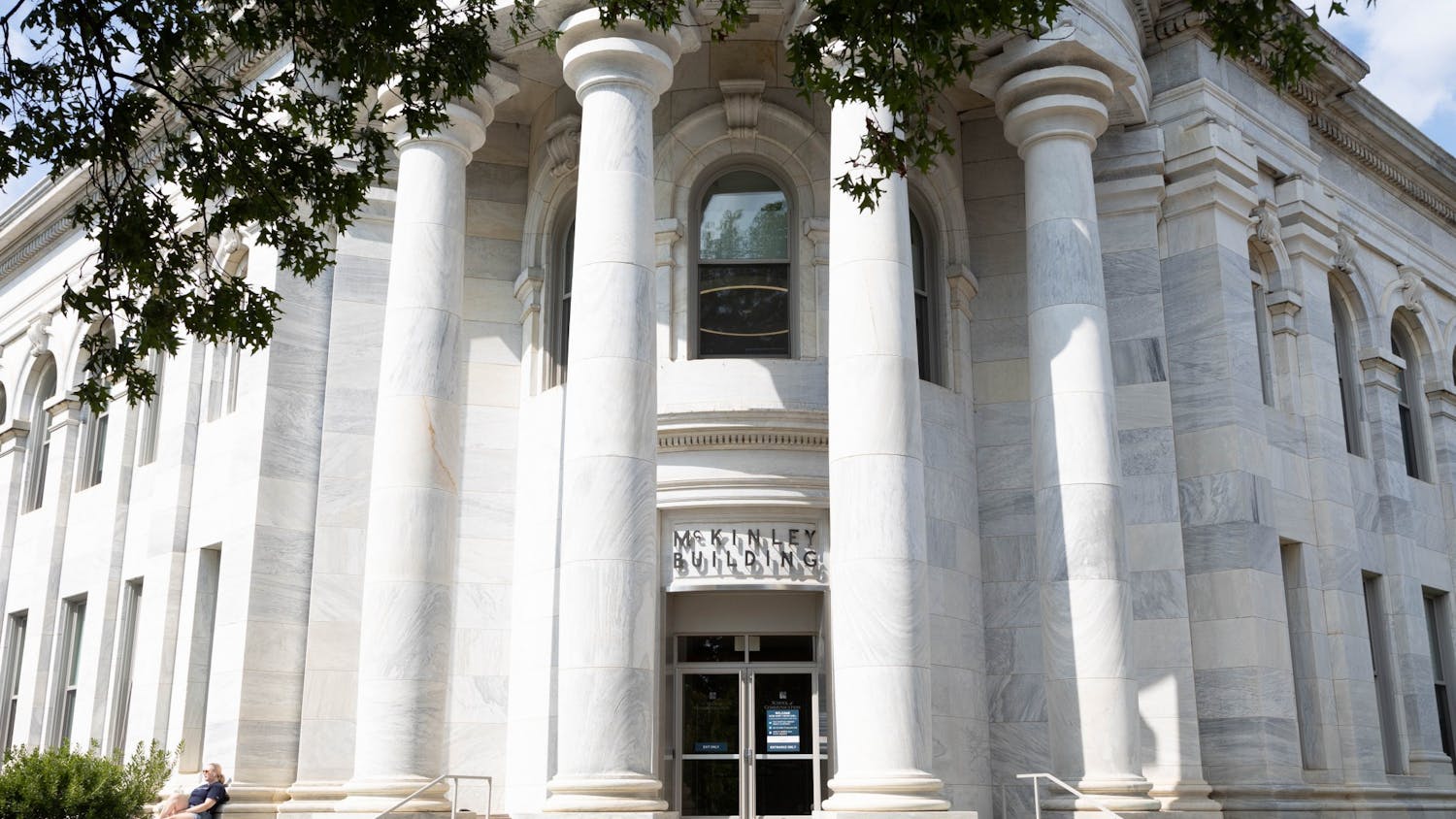From the Newsstands: This story appeared in The Eagle's November 2022 print edition. You can find the digital version here.
The D.C., Maryland and Virginia region occupies the land of several tribal nations. D.C. specifically occupies the land of the Anacostans, also documented as Nacotchtank, and the Piscataway tribe, and roughly 4,163 Indigenous people reside in the district today. At American University, Indigenous students are paving the way for the ecological and emotional interests of their communities.
The Piscataway tribe, which lived along the Potomac River, gained land recognition from the state of Maryland in 2012. However, the Anacostan tribe has received no recognition to date, even though this tribe was the steward of many famous places in D.C., such as the Anacostia River.
Historically, both the federal and state governments have implemented policies that directly target the land and wellbeing of Native American tribes, such as the Homestead Act of 1862. D.C. is home to numerous National Parks, but government ownership of nature preserves, like Rock Creek Park, prevent Indigenous groups who lived there from accessing the land.
Beyond policy, there is also cultural disregard of Indigenous people in the district. Multiple statues of colonizers are scattered throughout the city, and D.C.’s football team was previously named the Washington Redskins, now named the Washington Commanders.
Although these issues may seem separate from the environment, protecting Indigenous rights is inherently tied to achieving sustainability. Not only do Indigenous people protect over 80 percent of the global biodiversity, but their environmental value systems, such as ethical farming and soil preservation tactics, are crucial to preserving nature.
The environmental consequences of excluding Indigenous groups from conservation management can be seen through the pollution of the Anacostia and Potomac rivers. Anacostan and Piscataway people have been prevented from fishing there for decades, and activists are pushing for these tribes to regain free fishing licenses to these rivers.
Indigenous students at AU are bringing these issues and stories to light through organizations and mobilizing voices. The Indigenous Initiative, created by the School of International Service Undergraduate Council, is a community for Indigenous students and provides educational resources for allies who are interested in Indigenous issues.
Olivia Olson, president of the Indigenous Initiative and a junior in SIS, hopes to facilitate a space for Indigenous students and advocate for land acknowledgement at AU through working with the University administration.
“There's really limited representation of Indigenous students, especially Native American students," Olson said. "We're hoping to create that community.”
Recently, the Indigenous Initiative has formed a coalition with several Indigenous student organizations on campus, such as the AU Hawai’i Club, Students for a Free Tibet and Students for Justice in Palestine. The coalition runs events centered around creating a safe space for Indigenous students. Past initiatives include the “I Am On Native Land” mural in The Bridge and the Healing Circle, an event for students to share personal stories about their experiences as Indigenous students at AU.
Tsetan Namdol, president of Students for a Free Tibet and a junior in SIS, described the comfort in having a coalition.
“Even though we're so far away from each other, we're so interconnected based on how settler colonialism affects our people, how we get displaced and how we really heal from the trauma,” Namdol said. “I just think it's so inspiring and resilient that we can all come together as a group at AU.”
AU is a predominantly white institution, which for many Indigenous students, makes it difficult for them to speak up in class and feel heard at AU.
“I grew up in a predominantly immigrant community, refugee community, where we were all blue-collar workers, very hard, essential workers,” Namdol said. “Coming to a PWI was definitely very interesting, because your experiences where you're from versus where you go are just so different.”
She said she felt like there was a lack of space for her to feel accepted, and that even University-led inclusion initiatives like AUx did not provide her with an environment where she felt she could openly express herself.
Sarah Husseini, the president of Students for Justice in Palestine and a sophomore in SIS, had a similar experience, but she believes that her organization and other Indigenous groups on campus have done significant work to fill the gap left by AU.
“I feel like the space we have created has welcomed people and made them feel comfortable. I always hear people say, ‘I can't talk about this in my classroom, I can talk about it here.’ So that freedom of expression, freedom of speech and just overall, a sense of community, is really what we built,” she said.
Tori Brown, the president of AU Hawai’i Club and a sophomore in the School of Public Affairs, shared a similar experience being of an Indigenous organization on campus: “Having that club is definitely great for people who are from Hawaii, or are Indigenous to Hawaii. And again, collaborating with these clubs, it's definitely important ... it feels good to be seen and recognized.”
Through building a community to educate and uplift each other at AU, Indigenous students hope to display how the liberation of Indigenous groups, both international and local, is interconnected.
Olson hopes that these new projects Indigenous students are creating and the community they are forming will be encouraging for Indigenous students who consider applying to AU.
“[They] can see that that community is here and available to help support them and feel welcomed by that, is definitely a goal that we have,” Olson said.
To learn more about land justice and recognition, visit Native-Land.ca, which displays where Native Lands and Indigenous Nations reside across the globe.





